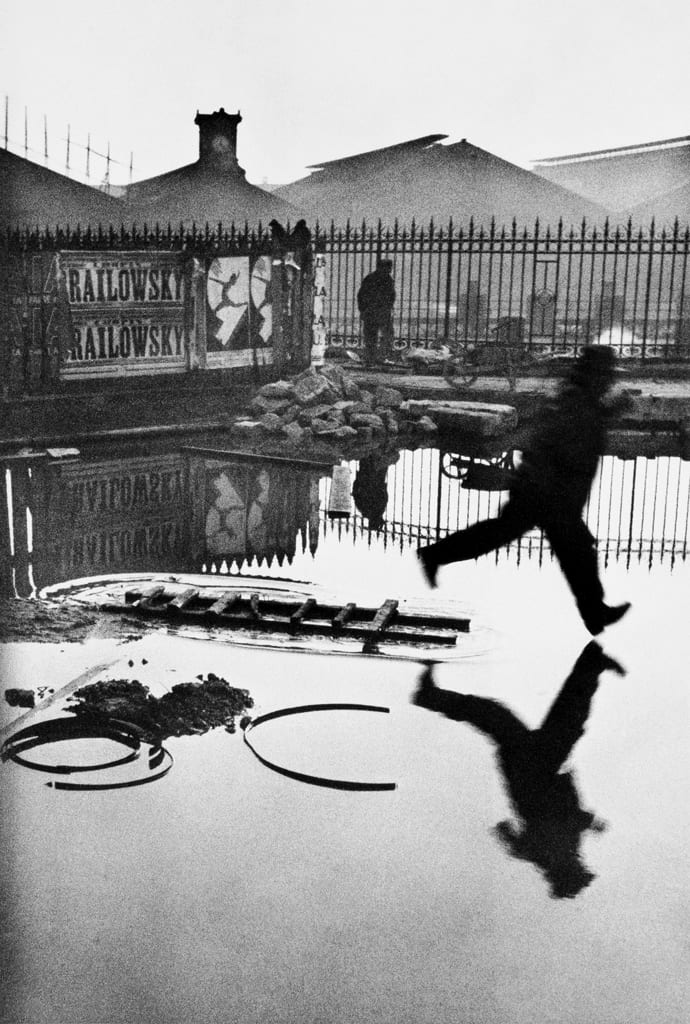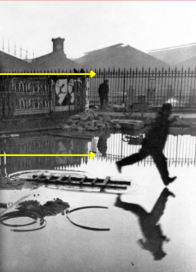What did Henri Cartier-Bresson mean by the decisive moment?
He was one of the first true street photographers and artfully captured everyday life through the lens. But he also coined a term: The “Decisive Moment”. With it he described the exact instance when a unique event is captured by the photographer, when something that may never happen again is frozen in the frame.
Image Analysis

This image is in black and white but is quite a light tone, this makes it easier to see finer details within the image. The texture of the image looks quite smooth and shiny overall, with a rough texture on the stairs. The tone of the image makes it easier to see every bird as clearly as possible.
Cartier bresson has managed to capture all the birds mostly in focus, suggesting that he had used a relatively fast shutter speed, aside from a couple wings that are blurry, capturing movement. The lighting looks to be as if it was captured during the daytime, whereas it could also be the lights in the area brightening up the image.
Cartier-Bresson saw cameras as an extension of the eye and he also came up with the idea of a ‘decisive moment’. I think this links to the decisive moment as he has captured all the birds in flight but also capturing the woman walking up the stairs who is framed by all the birds.
Image Analysis 2

In this image, the rule of thirds applies and the subject is in the middle right third. It perfectly divides the background, main ground and foreground which makes it more compositionally appealing to the eye.

The fence in the background acts as leading lines, the horizontal lines of the railings frame the leap and the main subject.

Making the image black and white, it strips any colour which helps emphasise the detail and gives the photo more depth. There is a strong tonal range, which means there are really strong highlights and shadows which draws you in. The black and white add nostalgia to the image which links to memories.
Cartier Bresson used a leica rangefinder, he used a 50mm lens because it allows him to capture images from afar and up close and in the moment. This allowed him to be a really effective street photographer and allowed him to use a more quick and obtrusive shooting style to be more discrete. He was a photographer inspired by instinct.
He had clarity and sharp focus, which added more depth to the photo, which suggests a smaller aperture. There was a quicker shutter speed as there was no motion blur.
Bresson takes advantage of the natural light and he uses the pure authenticity of the moment. while bright light is usually a nemesis to photographers, it allows for more dramatic lighting and frames the shadows. The light in the sky reflects perfectly onto the puddle on the ground. since there is a puddle in the foreground, it allows for equal light in the background and the foreground and makes the centre more in detail.
The Gare Saint-Lazare became one of Henri Cartier Bresson’s most renowned and popular photos, revolutionising street photography and the idea of the candid photo, signifying the beauty is something so ordinary and showing that everyday lives can be beautiful too. It perfectly captured the moment, having to wait for the optimal time and freezing that split second in time.
